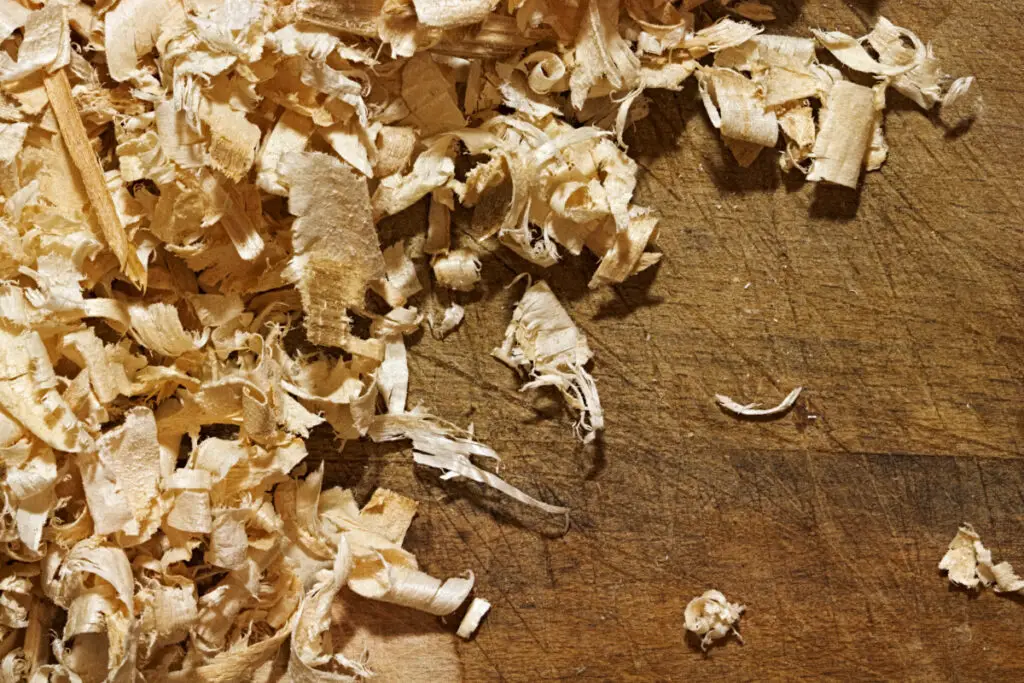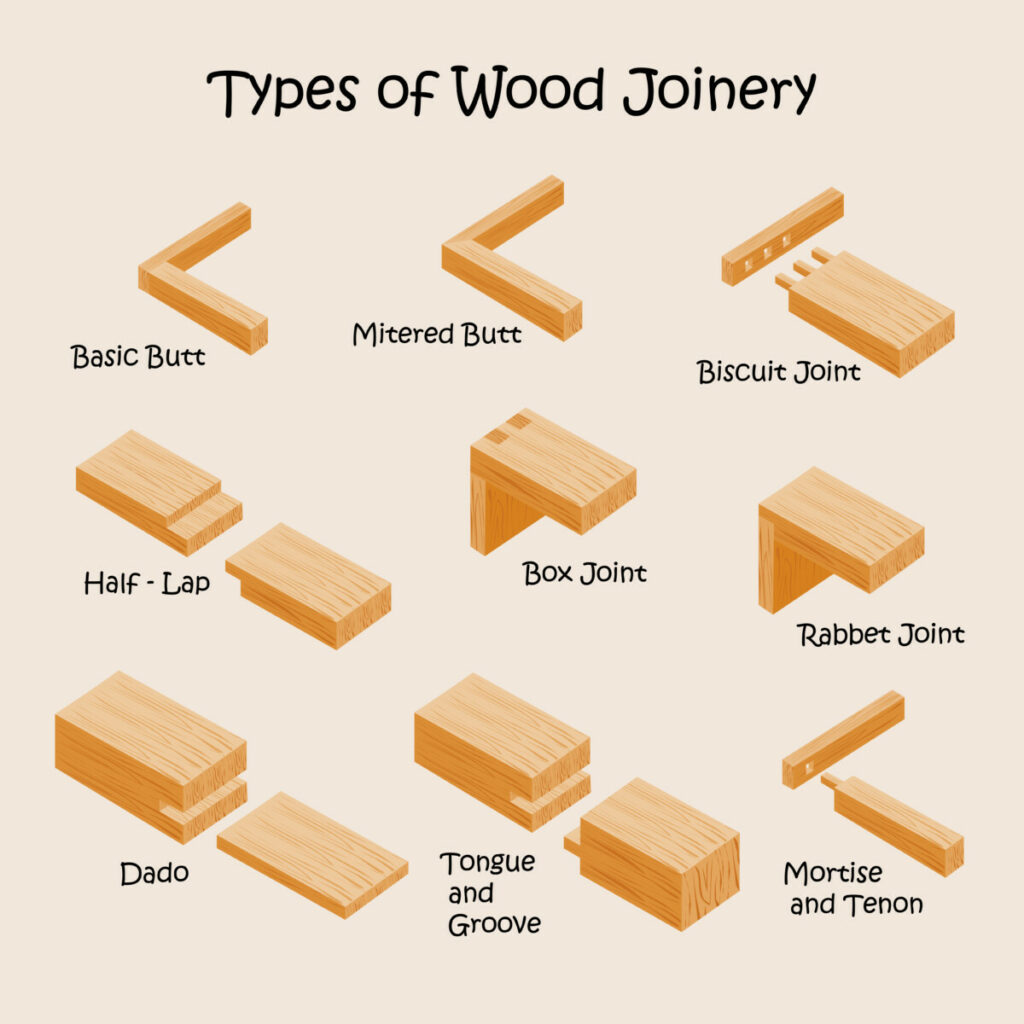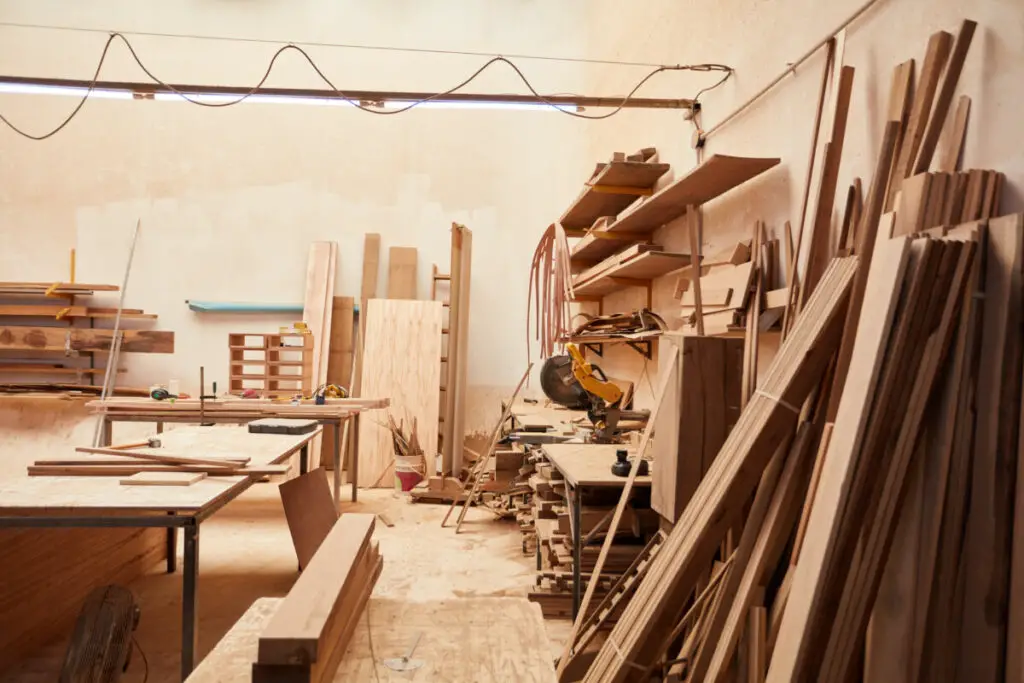How you decide to circumvent using a jointer depends on what you’re building, but there are several alternatives to purchasing an expensive jointer to make biscuit joints.
To make a biscuit joint without a jointer, slots need to be cut into the wood the size and shape of the biscuits. Any tool that can cut slots in the wood can be used, such as a hand tool or router with a bit, or a long slot cut all the way down the board can be used instead to attach many biscuits.
Biscuit joints are an easy way to connect two boards, especially plywood to solid. You don’t want to spend lots of money on one machine that only performs one function, so what’s a good way to joint two boards without using a jointer?
Making Biscuit Joints

Biscuit joints are not made with actual biscuits, (unless you feel like baking some) but with wooden wafers called biscuits. These thin wooden ovals are placed in a slot in a board of wood with half sticking out. The opposite half is then placed in another slot in the piece of wood being attached. Wood glue is used to secure the biscuits, and the two boards are joined!
The biggest problem with biscuit joints is that slots need to be cut into the boards that fit the biscuits. A jointer can be used to cut these slots, but many woodworkers don’t want to spend the money or waste space on a tool they’ll only use once or twice and can only accomplish one purpose. There are other options to connect biscuit joints!
One way is to use a tool you already have on hand to cut the slots. Any small hand tool you can use to cut slots into the wood can be used. The slots don’t have to be exact because the biscuit will be held in with glue.
If you already have a router, you can purchase a special bit that will essentially turn your router into the perfect tool to make biscuit joints! Check out the video below for more information on how to use a router to make biscuit joints.
Another method can be used if you are attaching lots of biscuits all at once all along the edge of the board. Use a table saw to cut one long slit along with the board that is as deep as the length of half a biscuit (measure biscuits beforehand, they are not all the same length, and you can also make biscuits yourself).
Then, attach the biscuits all along the slit, however many you want, where you think the board needs to be reinforced. Then, do the same to the other board and use wood glue as needed to attach the two boards. Voila! Connected boards, no jointer or overpriced equipment required.
These alternatives require a bit more thinking outside the box than a jointer, but make up for the extra time or thought by saving money on unnecessary equipment.
Do You Need a Biscuit Jointer?
There is some debate over whether or not biscuits are even necessary for joints. The biscuits aren’t keeping the wood pieces together, nor do they add structural integrity. The biscuits are in place just to make the wood boards line up correctly, and there are lots of other, easier tools that allow you to do this.
What keeps the boards together is wood glue more than anything. Wood glue is incredibly strong, capable of handling 3,600 to 4,000 psi, making it stronger than some kinds of wood. Since the wood glue alone can keep most joints together, the biscuits aren’t always necessary. This is good because using biscuits can be complicated and unnecessarily time-consuming.
Screws can also be used as a cheap and easy way to keep the boards connected. Screws are faster because they don’t have to dry, are easier to remove than wood glue if you make a mistake, and also don’t have the same flexibility as wood glue for hard-to-connect joints.
Either way, using an alternative joint or just wood glue can save you a lot of time and effort in the long run.
Alternative Joints

If making slots for biscuits isn’t your cup of tea, there are other joints you can use that are just as secure as biscuits and easier to use.
The most basic way is to just put two edges together and secure them with glue or screws. You can match the two boards up at a ninety-degree angle, or cut both edges to be forty-five degrees and match them up for a more even, prettier corner.
One way is to use wooden dowels instead of biscuits. Like biscuits, dowels are wooden pieces that are secured with glue and halfway inserted into each board, but unlike biscuits, the dowels are cylindrical pegs rather than wooden wafers.
You can use a drill to make a hole the size of the dowel as an alternative to a jointer. Drills can be used for a multitude of purposes and woodworkers are much more likely to have one on hand than a jointer.
Another option is to dovetail the wood. This requires cutting the edges of the two pieces of wood into corresponding shapes that fit together, like a pattern of squares that mirror each other. Then fit the two edges together with some wood glue to secure the joint.
Another method is the half-lap joint. Cut two squares the same size into two edges, each half into the board. Then, fit the two square-shaped holes together.
When creating a joint, you need to secure the wood by making the joint tight enough to not require binding, or using a binding agent of some kind. This could mean wood glue, screws, or a small piece of wood that connects the two boards like biscuits or dowels.
What kind of joint you use depends on the piece. Stronger pieces that need to hold weight will require strong joints secured by something strong like screws. Decorative pieces can hold their own with just a joint, so long as everything is connected. Don’t underestimate the strength of joints that are fitted specifically together, as those can also hold strong under a lot of pressure.

